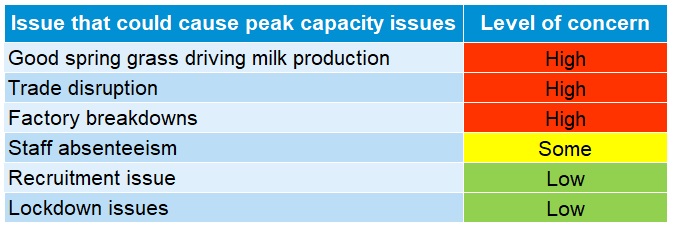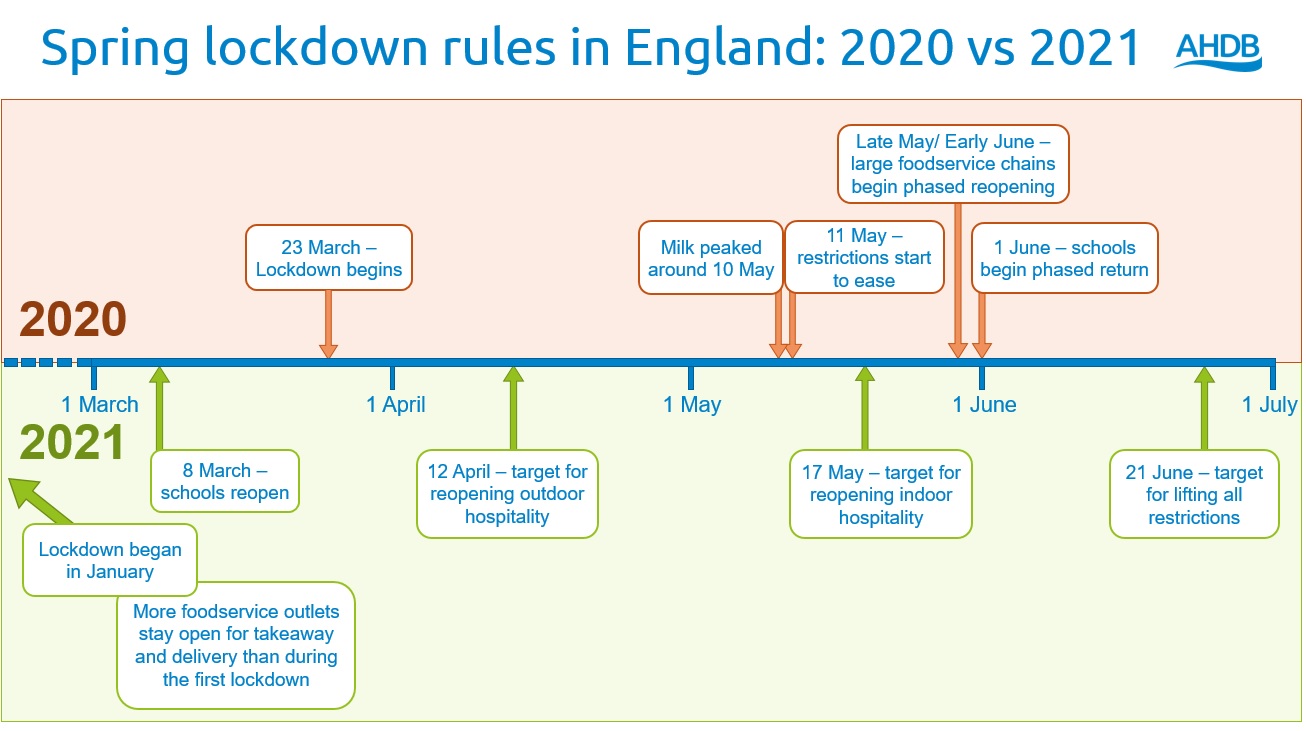Can the dairy industry handle this year’s peak?
Wednesday, 10 March 2021
By Kat Jack and Chris Gooderham
With spring approaching and the country still in lockdown, should farmers be concerned about whether the spring peak will bring the same issues as last year?
At the latest Milk Forecasting Forum, we asked the main milk processors, consultants and farming unions, how concerned they were about the upcoming peak, covering the following main factors:

Most of these concerns are the same potential risks as every year. The concern for pandemic-related issues was relatively low, but concern around trade disruption has been heightened by the EU exit.
The UK often exports excess cream and skim concentrate to help balance volumes over the peak. Discussions at the Milk Forecasting Forum established that the new trading environment isn’t a concern for regular exporters, as there is demand in Europe for the product. However, issues could arise in the event of a site breakdown or similar, as the paperwork requirements would take too long to sort out for exports with short notice. A factory breakdown could, therefore, have more serious consequences this spring than it would do normally.
On the pandemic side of things, the industry is in a much more secure position than it was last spring. With a year to adapt, processors are better prepared for shocks, and staff absenteeism concerns have eased as case numbers have fallen across the country. On the demand side more food outlets are open for the permitted delivery and takeaway compared to the first lockdown. If the government’s roadmap for reopening is not delayed, we will have seen schools and outdoor hospitality return before this year’s peak, and indoor hospitality not long after. Although the foodservice sector will still be far from its pre-covid norm, this should still mean more demand than in spring 2020, when many outlets were firmly closed until late May.

The group did raise concerns about Ireland already running at capacity. While mainland Britain rarely exports milk to Ireland, it does happen on occasion when milk volumes are particularly high.
Overall the consensus of the Milk Forecasting Forum was that risks over the peak are in line with 2019, rather than the heightened risks seen in 2020. If all goes well, this should mean no repeat of the milk curbing seen last spring – but the situation will still need to be closely monitored for any changes, especially linked to trade friction.


Sign up to receive the latest information from AHDB.
While AHDB seeks to ensure that the information contained on this webpage is accurate at the time of publication, no warranty is given in respect of the information and data provided. You are responsible for how you use the information. To the maximum extent permitted by law, AHDB accepts no liability for loss, damage or injury howsoever caused or suffered (including that caused by negligence) directly or indirectly in relation to the information or data provided in this publication.
All intellectual property rights in the information and data on this webpage belong to or are licensed by AHDB. You are authorised to use such information for your internal business purposes only and you must not provide this information to any other third parties, including further publication of the information, or for commercial gain in any way whatsoever without the prior written permission of AHDB for each third party disclosure, publication or commercial arrangement. For more information, please see our Terms of Use and Privacy Notice or contact the Director of Corporate Affairs at info@ahdb.org.uk © Agriculture and Horticulture Development Board. All rights reserved.

